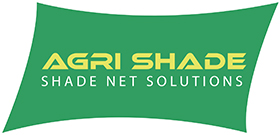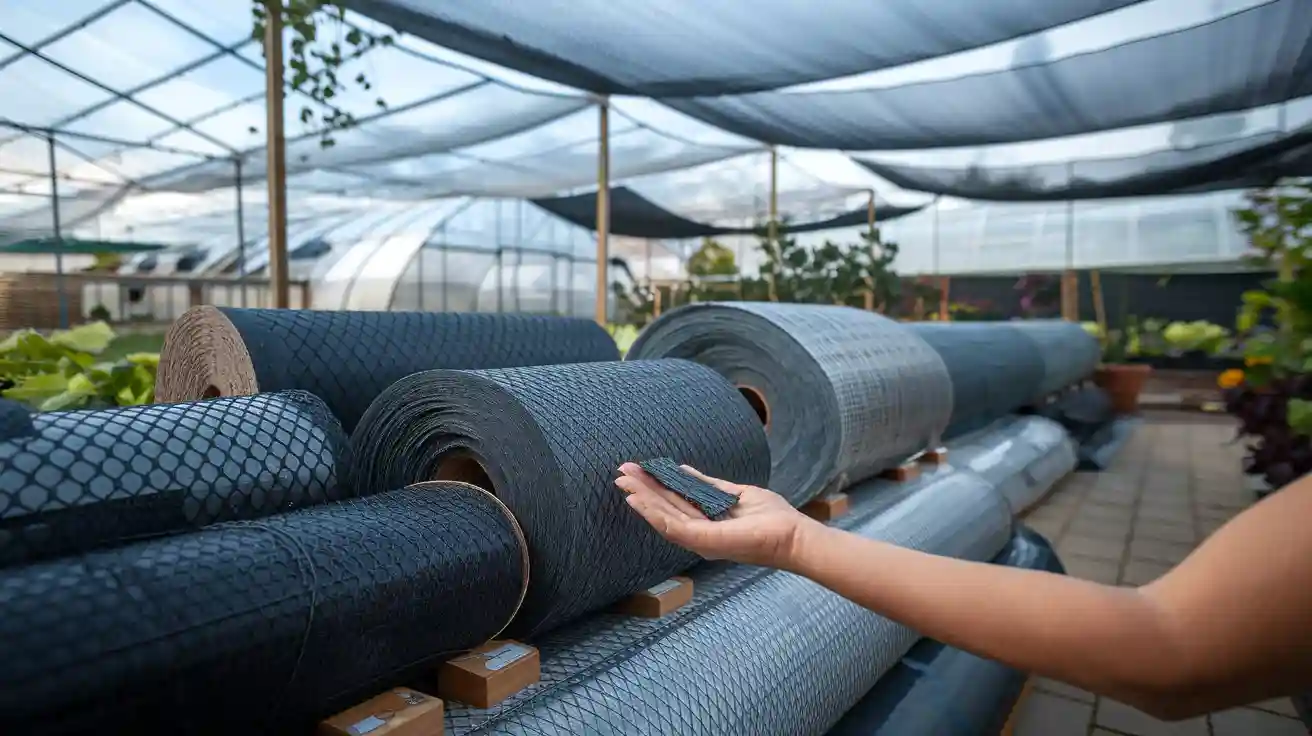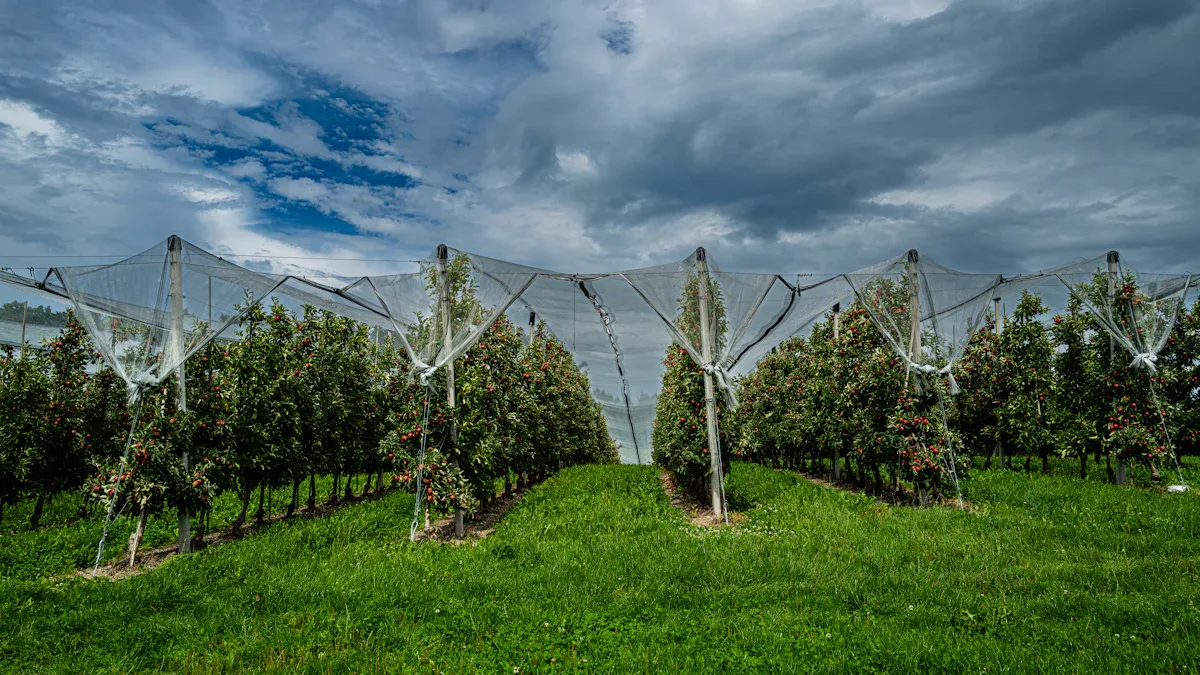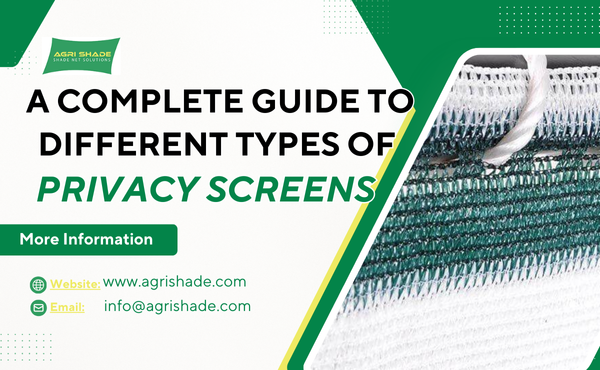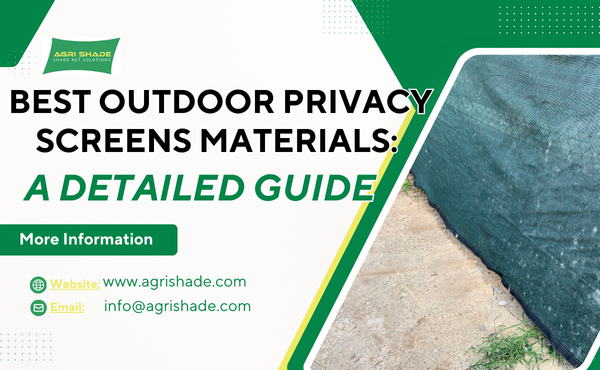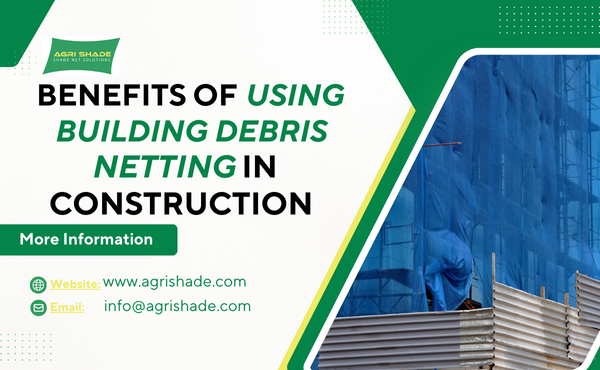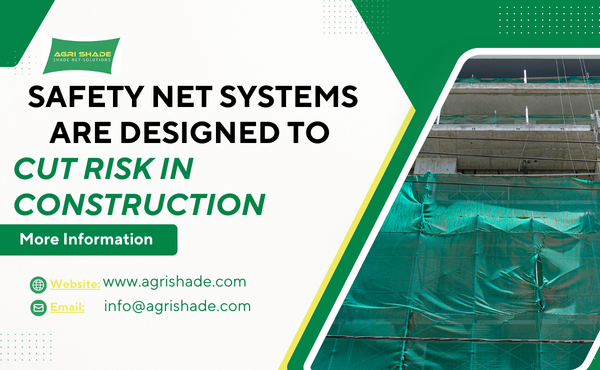Shade nets come in different types, each made for specific uses in agriculture, gardening, and outdoor protection. They reduce heat, control sunlight, and improve plant growth. Understanding their structure, materials, shade rates, and colors helps you choose the right one. This guide explains each type clearly so you can select the shade net that fits your needs.
Shade Net Types
Knitted Shade Net
Knitted shade nets are made with yarn loops that lock together. This makes them bend easily and keeps them strong. Many gardeners and farmers like them because they last a long time. These nets do not tear or fray easily. They are good for places with lots of wind. You can cut them, and they will not come apart.
There are different kinds of knitted shade nets. Some types are monofilament, tape, and Raschel. Each kind helps with different needs. Knitted shade nets let air move through for plants. People use them a lot in greenhouses and nurseries.
Woven Shade Net
Woven shade nets are made by crossing threads over each other. This makes the net firm and keeps its shape. Farmers use woven shade nets for big fields and car parks. These nets block more sunlight than knitted ones. They can cover large spaces and do not sag. Woven shade nets are best for heavy-duty shading. They do not stretch much. People use them for outdoor projects that last a long time.
Monofilament Shade Net
Monofilament shade nets are made from thick plastic strands. This type is one of the knitted shade nets. Monofilament knitted shade nets are very strong and block UV rays. They work well where the sun is very bright. These nets let air pass through easily. They keep delicate plants safe from sunburn. People use monofilament knitted shade nets for farming and gardening.
Multifilament Shade Net
Multifilament shade nets are made from many thin fibers twisted together. This kind is also a knitted shade net. Multifilament knitted shade nets feel softer and lighter than monofilament ones. They give gentle shade to crops that need it. Multifilament knitted shade nets spread shade evenly. These nets are good for nurseries and flower gardens. They help young plants stay cool and healthy.
Shade Net Materials and Colors
PE, PP and HDPE Shade Net
Many types of shade cloth use different materials. Polyethylene (PE) is a common choice for shade cloth. It feels light and resists water. Polypropylene (PP) also appears in some types of shade cloth. It gives good strength and lasts a long time. High-density polyethylene (HDPE) stands out among all types of shade cloth. HDPE shade cloth blocks UV rays and does not break down in sunlight. Farmers and gardeners trust HDPE for its durability. Canvas sometimes appears in older types of shade cloth, but it does not last as long as plastic options.
The table below compares these materials:
| Material | Durability | UV Resistance | Weight | Common Use |
|---|---|---|---|---|
| PE | Medium | Good | Light | Gardens, patios |
| PP | High | Good | Light | Agriculture, farms |
| HDPE | Very High | Excellent | Medium | Greenhouses, fields |
| Canvas | Low | Poor | Heavy | Temporary covers |
Shade Net Colors and Their Uses
Shade cloth comes in many colors. Each color affects how much light and heat passes through. Black shade cloth absorbs heat and blocks the most sunlight. Green shade cloth blends with plants and gives balanced shade. White shade cloth reflects sunlight and keeps spaces cooler. Blue and red shade cloth colors change the light spectrum for plants. These types of shade cloth help control plant growth.
Here are some common shade cloth colors and their uses:
- Black: Best for strong sun, car parks, and patios.
- Green: Good for gardens and nurseries.
- White: Used in greenhouses to lower heat.
- Blue/Red: Used in research and special crops.
Shade Percentage Variations
35% Shade Rate
A 35% shade rate is good for fruit trees. It also works for crops that like the sun. This shade lets most sunlight reach plants. It lowers heat stress but does not block too much light. Many people use 30% shade cloth for light shading. It protects plants from too much sun.
50% Shade Rate
A 50% shade rate is best for vegetables and nurseries. It is also good for general gardening. This shade level keeps a balance between light and air. The 50% shade cloth stops sunburn. It helps plants grow strong and healthy. It also controls too much sunlight on hot days.
70% Shade Rate
A 70% shade rate is for plants that like shade. It is good for flowers and young seedlings. This shade gives strong protection from bright sunlight. Many gardeners use 70% shade cloth for flower beds. It helps young plants that cannot take too much sun.
80% Shade Rate
An 80% shade rate gives high protection to seedlings. It is also good for ornamental plants. This shade keeps heat and light low. It works best where plants need to stay cool. It protects them from strong sun.
90% Shade Rate
A 90% shade rate gives the most shade and cooling. It is great for car parks and patios. It is also good for places with very hot weather. The 90% shade cloth blocks almost all sunlight. This may slow plant growth but keeps areas much cooler.
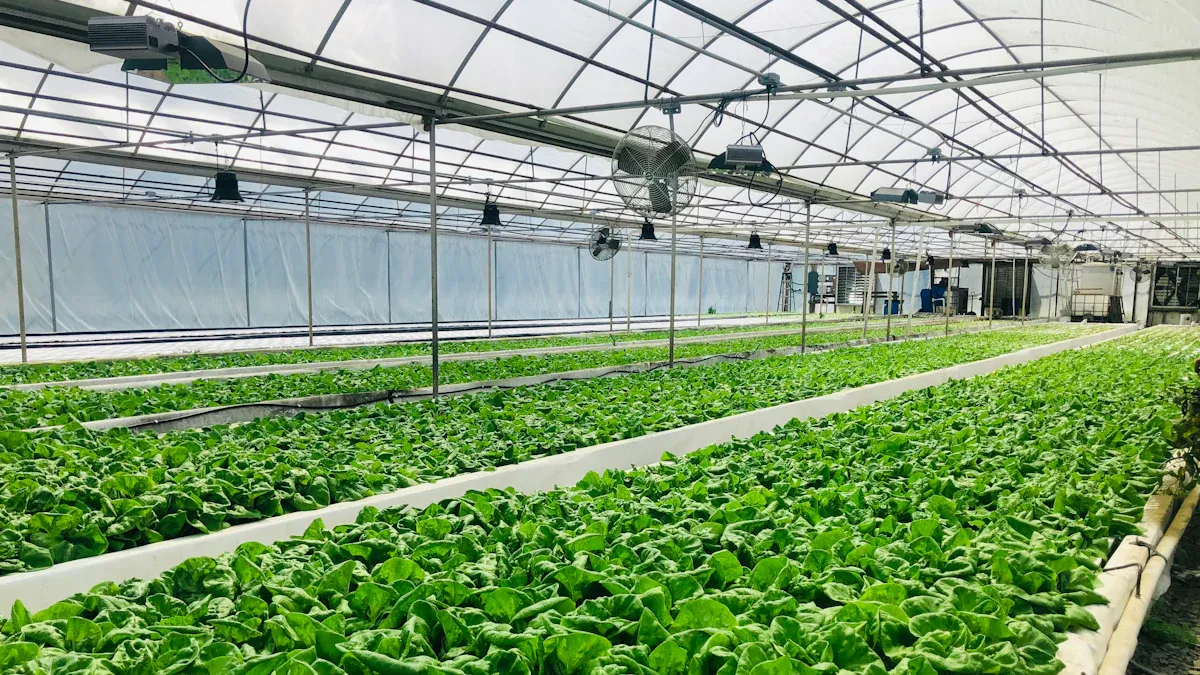
Agricultural Shade Net Applications
Applications by Scenario
Greenhouse
Greenhouses need the right shade cloth for plants. Knitted shade nets with 50%-70% shade rate work for most crops. These agricultural shade nets let air move and keep temperatures steady. Greenhouse shade netting stops plants from getting too hot. Many growers use knitted shade netting because it lasts and does not break easily.
Open Field Cultivation
Open fields get a lot of sun and wind. Knitted shade nets with 50%-70% shade rate protect leafy greens and soft crops. Woven shade nets with 30%-50% shade rate help stop sunburn and make fruit better. These agricultural shade nets give strong protection to crops. Farmers pick woven shade nets for big fields because they cover more space and stay in place.
Nursery
Nurseries need to protect young plants well. Knitted shade netting with 60%-80% shade rate keeps seedlings safe from strong sun. Monofilament knitted shade nets with 50%-70% shade rate also help saplings. Nursery managers use these agricultural shade nets to keep plants cool and healthy. Nursery shade cloth stops wilting and helps plants grow early.
Applications by Crop Type
Vegetables
Vegetables need the right amount of light and air. Knitted shade netting with 50%-70% shade rate is best for most vegetables. This shade nets helps vegetables grow and stops heat stress. Gardeners use shade netting for plants in greenhouses and open fields.
Fruit Trees
Fruit trees need sunlight to make fruit. Woven shade nets or knitted shade nets with 30%-50% shade rate work well. These agricultural shade nets protect fruit from sunburn and heat. Farmers use shade netting for plants to get better fruit and more yield.
Flowers
Flowers often need more shade than other crops. Knitted shade netting with 50%-80% shade rate fits many flowers. This shade cloth keeps flower colors bright and stops wilting. Garden and greenhouse shade netting help flowers grow well in farms and gardens.
| Scenario/Crop | Recommended Shade Cloth Type | Shade Rate (%) |
|---|---|---|
| Greenhouse | Knitted shade netting | 50-70 |
| Open Field | Woven shade nets / Knitted shade nets | 30-70 |
| Nursery | Knitted shade netting / Monofilament knitted shade nets | 50-80 |
| Vegetables | Knitted shade netting | 50-70 |
| Fruit Trees | Woven shade nets / Knitted shade nets | 30-50 |
| Flowers | Knitted shade netting | 50-80 |
How to Choose The Right Shade Net Type
Based on Purpose
People select shade cloth based on what they need to protect. For gardening, knitted shade nets work well because they allow air to move and last a long time. Farmers often use woven shade nets for large fields since these types of shade cloth cover big areas and block strong sunlight. Car parking areas need shade cloth with a high shade rate to keep vehicles cool. Patios and outdoor spaces benefit from knitted shade netting, which provides comfort and reduces heat.
Based on Climate and Location
Climate plays a big role in choosing shade nets. Hot and sunny places need shade cloth with a higher shade rate. Cooler areas may use lighter shade cloth to let in more sunlight. People in windy regions often pick knitted shade nets because they resist tearing. Urban gardens may use green or white shade cloth to blend with surroundings and reflect heat.
| Location Type | Recommended Shade Cloth | Shade Rate (%) |
|---|---|---|
| Hot & Sunny | HDPE shade cloth | 70-90 |
| Cool & Cloudy | PE shade cloth | 30-50 |
| Windy | Knitted shade nets | 50-70 |
| Urban | Green/White shade cloth | 50-70 |
Durability and Maintenance Considerations
Durability matters for long-term use. Knitted shade nets last longer than most other types of shade cloth. They resist UV rays and do not fray when cut. Woven shade nets offer strong coverage but may need more care if used in harsh weather. People should clean shade cloth regularly to prevent dust and mold. Always check the product for UV protection and easy maintenance.
Conclusion
Choosing the right shade net depends on your purpose, climate, and location. Knitted nets offer breathability and durability, woven nets provide strong coverage, and various materials affect lifespan and UV resistance. Match the net’s shade percentage and type to your environment and crop for best results. Proper selection and care ensure long-lasting protection and healthier plants.
